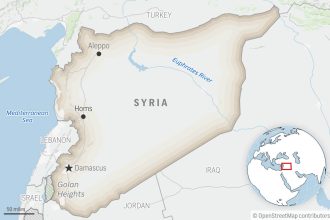The Oregon Department of Human Services is rolling out congressionally-designated changes to the SNAP food assistance program, which will reduce benefits for many Oregonians. Changes began Oct. 1 but will be rolled out in waves. Here’s what you need to know about how food assistance is changing.
Who is losing SNAP benefits?
FOOD for Lane County Development Director Rebecca Sprinson explains how federal SNAP funding cuts will affect the food bank at a press conference on July 29, 2025, in Eugene.
ODHS predicts of the more than 740,000 people in Oregon currently receiving SNAP benefits, more than 313,000 people will have their benefits reduced or cut off under the changes made by Trump’s “Big Beautiful Bill.”
According to ODHS, the changes will affect three main groups of SNAP recipients: households receiving utility assistance, able-bodied adults ages 18 through 64 with no child under age 14, and certain documented immigrants.
Changes for utility assistance recipients
ODHS is implementing stricter requirements for those who qualify for benefits through a utility assistance program. Now families will only qualify for SNAP through the Heating and Cooling Full Utility Allowance if at least one member of the household is 60 or older or has a disability.
Families who applied or renewed between July 1 and Oct. 1 will get notices around Oct. 15 and see reductions in their benefits starting Nov. 1, 2025. ODHS estimates around 49,000 households will be affected with 29,000 seeing benefit reductions averaging $58 per month.
Stricter work requirements for SNAP benefits
If you’re an able-bodied adult without dependents, referred to by ODHS as an ABAWD, you may now only receive benefits for up to three months before you’re required to show proof you’re working.
The new rules also expand the definition of an ABAWD. Currently an ABAWD is someone between the ages of 18 and 54 who does not have a disability or a child under 18. Going forward, you can be subject to work requirements if you’re 64 or younger, or if your child is aged 14 to 17.
The legislation also removes exemptions for veterans, people experiencing homelessness and young adults aging out of foster care. Going forward, these people must meet work requirements to receive benefits. But it adds a new exemption for Indigenous Americans who meet the federal definition of “Indian, Urban Indian, or California Indian.”
You must work for at least 80 hours per month to meet the work requirements. In the three Portland-area counties as well as Yamhill, Benton and Hood River counties, the work requirements went into effect Oct. 1. In the rest of the state they’ll go into effect Jan. 1.
ODHS estimates around 310,000 Oregon residents could be affected by this change.
Immigrants to be cut off SNAP
Refugees, asylees, trafficking survivors and other documented immigrants who were previously eligible for SNAP, will no longer be able to receive benefits starting Nov. 1.
ODHS estimates this change will affect around 3,000 people.
When do SNAP changes go into effect?
If you applied for or recertified your benefits between July 4 and Oct. 1, benefit reductions will go into effect Nov. 1.
If you were approved for SNAP benefits before July 4 and are subject to these cuts, ODHS will send notice and reduce or eliminate those benefits sometime in 2026.
If you applied or reapplied Oct. 1 or later, the new rules apply. To learn more, visit oregon.gov/odhs.
How many people in Oregon rely on SNAP?
ODHS reports around 1 in 6 Oregonians receive SNAP benefits. According to the St. Louis Federal Reserve, just shy of 75,000 people in Lane County received some level of SNAP assistance in 2022, or around 1 in 5 people.
Alan Torres covers local government for the Register-Guard. He can be reached byemail at atorres@registerguard.com, on X @alanfryetorres or on Reddit at u/AlfrytRG.
This article originally appeared on Register-Guard: SNAP reductions in Oregon will affect 300,000









